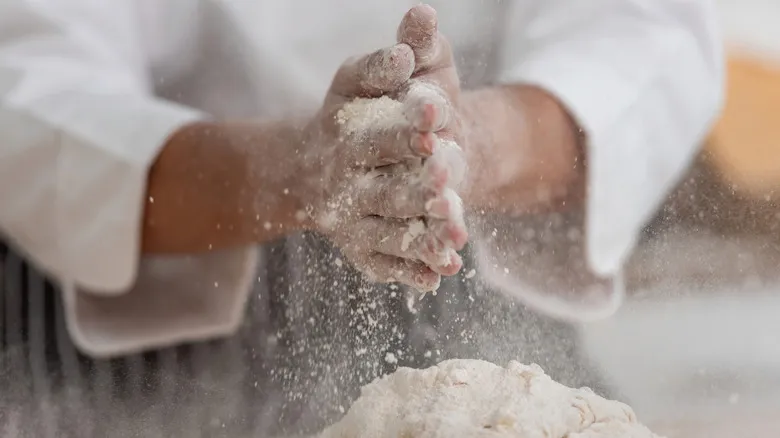Cautiously defrosting your phyllo

You might think it's easier to leave your package of phyllo dough on the counter to thaw instead of placing it in the fridge. While this method can speed up the defrosting process, it can lead to a doughy disaster. Thawing at room temperature increases moisture, resulting in soggy, sticky layers that are prone to tearing. Another common mistake is trying to work with dough that isn’t fully thawed. If the layers are still slightly frozen and too brittle, they may crack when handled.
If you do encounter a tear, there are a few ways to address it. You can either discard the damaged piece (or repurpose the broken bits into a crispy snack) or try to mend it by layering another piece of dough on top, which should be unnoticeable after baking. Working with this delicate dough may require some extra planning and patience, but whether you're exploring classic pie flavors from ancient Greece, enhancing your beef Wellington, or trying a Turkish twist on cheesecake, properly defrosted phyllo dough will enhance the flavor and texture of many of your favorite dishes.
Recommended

Why Psyllium Husk Is So Crucial For Gluten-Free Bread

The Key Difference Between Cake Flour And All-Purpose Flour

Why You Should Start Aging Your Cookie Dough

What Makes Flan Different From Crème Brûlée?
Next up





